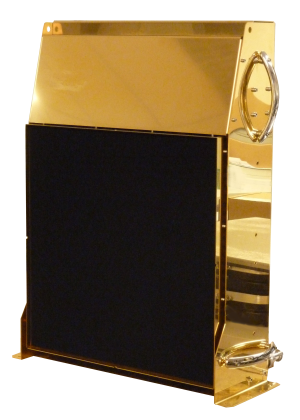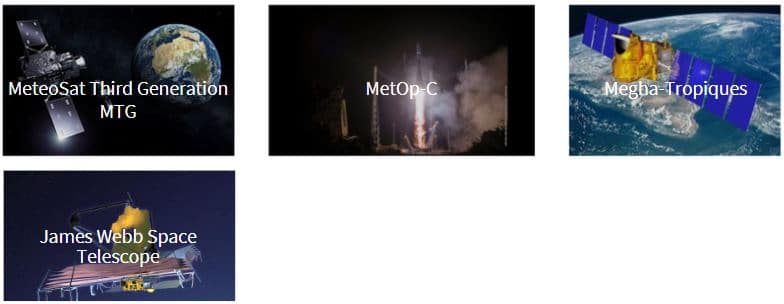Vacuum Blackbody
Vacuum Blackbodies range for cryogenic or ambient irradiative environment
A vacuum compatible emissive head is connected to our New Generation controller located outside the climatic chamber. The highest stability of regulation is ensured by an optimized control of the losses through radiation and conduction.
High emissivity up to 0.999 is obtained thanks to a vacuum compatible coating on a specific surface structure of the blackbody. The emissive surface’s temperature is measured in real time via high precision calibrated Pt sensors. All your tests are run by the INFRATEST electro-optical test software.
Various principles of thermal exchanges are available to suit different applications such as the characterization and radiometric calibration of spaceborne imagers and non-uniformity correction of infrared sensors.


3 key points

Absolute temperature range from 100K to 425K

High thermal uniformity and emissivity

Use of vacuum compatible coatings and materials
VACUUM BB
A complete range of vacuum black bodies:
DCN1000-V
RCN-V
ECN 100-V
Main characteristics:
- Large surface area up to 500 x 500 m2;
- Temperature range from +100K to +425K;
- Real-time display of temperature data in °C, K and F;
- Materials and assembly procedures compatible with cleanroom and vacuum chamber conditions;
- Fast response time and high stability;
- High thermal uniformity and high emissivity;
- Radiometric calibration on several spectral bands;
- Built-In Test Equipment (BITE): self-checking;
- Automatic compensation for the influence of chamber radiation;
- INFRATEST LT Software
Configuration et technologie :

An emissive head compatible with vacuum environment is connected to our New Generation controller located outside the T-VAC thanks to electric feedthrough defined in accordance with the chambers’ configuration (selection of flanges ISO, CF, KF). The highest stability of regulation is ensured through an accurate power control and modelization of losses through radiation and conduction.
The emissive surface’s temperature is measured in real time via high precision Platinium sensors calibrated by the National Metrology Institutes (LNE, PTB). Various possibilities of temperature control can be selected in order to suit the different T-VAC radiating configurations of the end-user.
Main applications:
Our Vacuum Black Bodies simulate space and terrestrial radiation, and enable the testing and calibration of space-borne infrared sensors. Here are some examples of major space programs we have participated in:

